Hiking the Inca Trail: Our Essential Safety Tips
How to pick a reputable company, how to prevent altitude sickness, and other safety tips before you reach Machu Picchu.
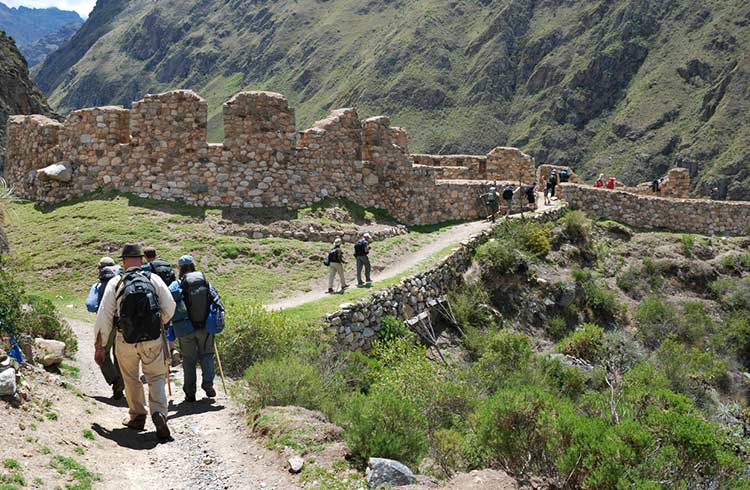 Photo © iStock/KDickinson
Photo © iStock/KDickinson
Many who take the two-to-four-day Inca trail trek up the Urubamba valley and through the Andes to reach the site. While Machu Picchu is a safe and very popular destination in Peru, there are still significant safety risks for those who want to visit.
While there are numerous other ways to Machu Picchu (such as the Salkantay Trek or taking the train), we take a look at some of the safety concerns for travelers specifically taking the Inca Trail.
Note: the Inca Trail closes every year in February for one week of maintenance. Since July 2017, access to Machu Picchu has been restricted to two sessions daily. This is to preserve the site and protect it from the damage of overcrowding. The first session will be from 6am to noon, the second from noon to 5:30pm.
- Altitude sickness at Machu Picchu
- Is Cusco safe?
- Tips for trekking the Inca Trail
- Walking the Inca Trail
- Taking the train
- Macchu Picchu safety tips
- The wet season at Macchu Picchu
- Listen to The World Nomads Podcast: Peru
Altitude sickness at Machu Picchu
If you're keen on Machu Picchu, you're obviously headed to Cusco. Once you're in the city, particularly if you've flown in, you're likely to find yourself huffing and puffing just scaling the stairs to your accommodation. For this reason, it's recommended you give yourself time to acclimatize to the thin air before setting off up the mountain.
At 10,800ft (3,300m) above sea level, even Cusco locals know to take it easy for a couple of days, saying "tome poco, come poco, y duerme solo," which means "Drink little (alcohol), eat little, and sleep alone."
Altitude sickness (soroche in Español), is a common problem among travelers to Peru, but it's something that can be easily combated. Soroche is caused by exposure to low-pressure oxygen at high altitudes, and after prolonged exposure, can result in flu-like symptoms, headaches, and "hangover" style feelings of disorientation.
To a more serious degree, poorly treated mountain sickness can later progress to fluid accumulation in the lungs, which potentially can be very dangerous.
One of the most common ways to combat altitude sickness in Peru is by chewing cocoa leaves combined with a mixing compound.
Cocoa leaves are easily obtainable and are considered by many as the best way to combat potential altitude sickness.
A more pharmaceutical option is the drug Diamox, which while originally designed to be a treatment for glaucoma, also works as a highly effective altitude sickness preventative. Diamox tablets are easily available at pharmacies in the United States and Australia. Always check with your doctor before going to the pharmacy to purchase Diamox tablets, and read through the side effects carefully.
But the basics always still help - make sure you are hydrated properly, avoid alcohol before your trek, and if you are a smoker, you better at least quit for a few days, or else you are going to have a lot of trouble making it through!
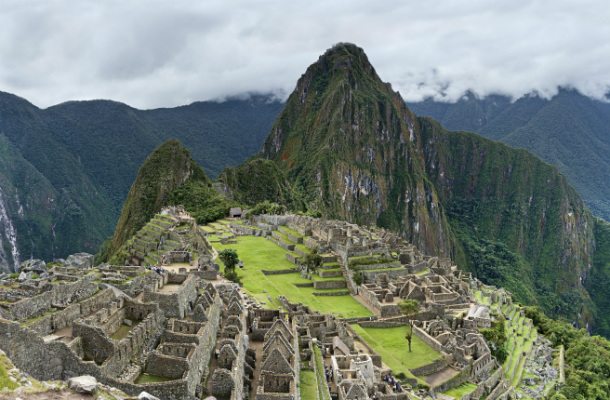
Is Cusco safe?
Don't fret though, there's plenty to do in Cusco while you're adjusting. The San Pedro Market and the Plaza de Armas are both just a short walk from most of Cusco's accommodation and provide plenty to see and do.
The town relies heavily on tourism for income and as a result, crime against tourists is frowned upon.
Everywhere you go in Cusco you'll be approached by hawkers offering a whole range of merchandise and activities. This bombardment can be a little unsettling at first but the locals are good-natured and generally polite - a simple "no, gracias" will usually suffice.
If you do decide to buy something, or get a shoe shine, make sure not to openly flip through your wallet when paying. It's best to keep a few small bills easily accessible for these little purchases or as a decoy for any light fingers. As with anywhere especially in busy tourist areas, keep any bags or cameras close and try not to make any flashy displays of wealth.
On the whole, Cusco is very safe.
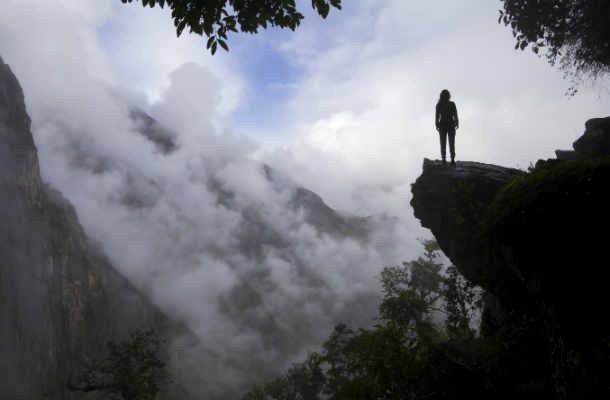
Tips for trekking the Inca Trail
While it's not vital that you get a guide for independent treks to Machu Picchu, it is highly recommended that you get one for safety's sake. There are stories of dishonest sorts taking tourists on alternative routes through the mountains while claiming to be on the Inca Trail, pocketing the cash for your official permits. If you want to trek the official Inca Trail you must be with a guide, who must have a special license from SERNANP (the National Service for Protected Area Management).
With many tour operators providing assistance for the Inca trail, you are spoiled for choice - but how do you know who is good, and who will give you a bum steer?
Firstly, your tour operator needs to have a license. These official documents should have your names and passport numbers on them and will be handed over to rangers once you get to the national park entrance. The Peruvian Government has limited the number of people who can travel on the Inca Trail per day to 500, and they don't allow non-licensed operators to run the trek.
So before you go, at the very least make sure you are able to go!
Also, do a bit of research on the web before choosing an operator. Look for favorable reviews (or unfavorable ones). You won't need to search far to find some truly shocking rip-off stories from very unhappy trekkers.
The popularity of Machu Picchu has brought in many shonky operators, so go with a company that has a reputable, trusted record, or you could be forking out a mountain of cash, only to be left with the wind taken out of you.
On the other hand, you shouldn't feel boxed into taking the Inca Trail to Machu Picchu or if you find the tour companies are clogged with bookings. The main tour groups all offer plenty of alternative routes that can be cheaper, easier to book and significantly less crowded. If you're an experienced hiker you won't even need a guide to access these trails.
Book early
In the name of preservation, the number of people starting up the ancient track, including guides and porters, is strictly limited to a 500 a day by the Peruvian government. Because of these limits and the route's popularity, spots on high-season tours can get booked up well in advance.
Unfortunately, some tour companies and travel agents, local and foreign-owned, make the most of this and charge huge amounts for pre-bookings. If you're going to be in Cusco between April and September and are determined to secure a spot, you might have to accept this expense.
If your travel plans are a little more flexible there are other options. If you're arriving outside of the high season with some time on your hands, it is worth shopping around for a tour operator.
Some of the smaller companies will take you along the trail for a fraction of what the biggest companies charge, especially if there are a few of you to bring some bargaining power. You'll also have more input in your tour structure, might meet your guide in advance and will be able to check out the gear you'll be using.
If you do decide to hunt for a bargain don't deal with touts. Make sure you are talking directly with the people you'll be paying and traveling with.
Do an Internet search on the company to check for any past dodgy dealings and don't hand over any money until you see their SERNANP accreditation, which any legitimate company will be quick to provide.
If you find a company you think you like, take note of the name and where their office is as well. Sounds obvious, but there are travel companies scattered all over Cusco and if you spend a day walking between them trying to make a deal it is easy to get mixed up.
Walking the Inca Trail
Dehydration can exacerbate altitude sickness so it's important to drink plenty of water. You'll be able to buy bottled water at a couple of points along the trail but porters should also provide some boiled water each morning and evening. If you want to be really careful bring a few purification tabs or drops along with you.
If you do decide to take on the Inca Trail you need to make sure you're healthy and prepared. It's considered an intermediate trek and people of all ages complete it every year. Porters will be carrying all the heavy stuff for you, but you will be covering 26mi (42km) over three to five days, depending on your tour structure, and climbing up to 13,780ft (4,200m) above sea level so you should be reasonably fit.
Low-pressure oxygen and the exertion of climbing mean that altitude sickness, or soroche, can also be an issue.
Mild cases cause hangover-like symptoms, including fatigue, nausea, disorientation, dizziness and shortness of breath.
The locals chew the stimulant leaves of the coca plant or make coca tea (mate de coca). You'll be able to buy big bags of coca leaves in Cusco before you set off, or from vendors along the route.
Although unlikely on the Inca Trail, chronic altitude sickness can cause bad headaches, fever, loss of consciousness or even death. If you start to feel any chronic symptoms do not try to push on. Let your guide know and head back downhill as soon as possible.
Much of the trail is paved, so you won't be bush bashing, but it is also largely still the original Incan stonework and can be a little wobbly. Watch your footing and make sure you have appropriate and comfortable shoes. A walking stick can also be handy but metal tips damage the ancient stairs and aren't allowed on the trail. There are plenty of hand-crafted wooden sticks for sale in Cusco and along the trail itself.
It can get very cold at the Pacaymayo campsite, nestled in the valley beneath the trail's peak at Dead Woman's Pass, so make sure you take a decent sleeping bag. If you don't have one of your own, most companies will let you hire a nice warm one for about US $10.
On the last day of your trek, you'll probably have a very early start in order to reach Machu Picchu before the crowds or even in time for sunrise. This means you'll be walking through some fairly rugged terrain in the dark. Slippery morning dew on the stone staircases certainly won't help, so take it easy. You don't want to walk the entire Inca Trail only to injure yourself before the grand finale.
Taking the train
Unfortunately, if you're catching a train out to Machu Picchu there's not much chance of an early arrival. The first trains from Cusco get in around 10am and there's still a long walk or bus ride up the winding road from Aguas Calientes to the sacred site.
If you really want to get in ahead of the crowd you could get a bus to Ollantaytambo (Sacred Valley) and take one of the earlier trains from there. This will get you in at about 8am, early enough to beat the bulk of the crowds, but not in time to catch the sunrise. Also, trains from Ollantaytambo run all day, compared to only two daily services from Cusco, so they're less likely to be overcrowded or booked out.
There are two classes of tickets: budget Backpacker or the more expensive Vistadome. Both sell out days in advance during the high season so make sure to book ahead on the Peru Rail website. These trains are restricted to tourists in an effort to cut out petty crime but that isn't an excuse to get complacent. The carriages are normally crowded so don't leave any bags or cameras lying around.
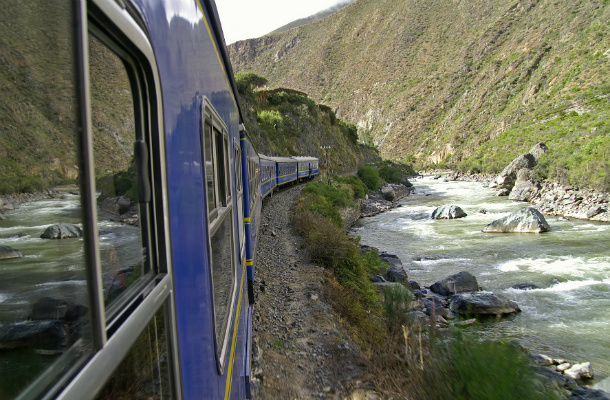
Macchu Picchu safety tips
The main hilltop complex at Machu Picchu is no picnic. There are no rails on the imposing steps and the steep valley means a tumble could be disastrous. The ancient Incans seem to have had rather lax building safety standards as well. The stone surfaces can be uneven and unstable so it's important to watch your step, especially if it has been raining.
If you have the opportunity, register to climb Waynu Picchu, the stark pillar of rock that towers above the ruins. The peak offers another perspective on the ancient city as well as its own ruins, caves and temples but only 400 people per day are allowed to climb it.
If you manage to squeeze in among this number a spectacular bird's eye view awaits you at the top, certainly worth the two-hour round trip. However, the route up the craggy rock face is rather perilous, with steep, narrow staircases and unguarded drops. Not recommended if you have an issue with heights or balance.
Fitness is a factor as well, so remember not to wear yourself out wandering around the sacred city if you're determined to conquer the mountain and don't forget your travel insurance, obtain a quote from us here.
The wet season at Macchu Picchu
If you are traveling in the area, during the wet season from November to April, beware of sudden and heavy rainfall. The mountainous terrain around Cusco means the area is prone to flooding and landslides after torrential rain.
A rapid increase in water levels in a river or stream may indicate heavy rainfall higher up the mountain, which can lead to flash flooding. Conversely, if the water slows to a trickle it can indicate a landslide upstream.
Tilted trees, fences or power poles and cracks in paths or tracks can mean the earth has shifted and can precede a larger mudslide. Avoid steep, bare slopes and listen for rumbling sounds that can signify an approaching landslide or mudflow.
In this situation, you need to stay calm and keep informed. Don't make any rash decisions. Find out what you can and plan your next move. Never ever try to wade through floodwaters. Even very shallow water can knock you over when it's moving fast enough, while deeper water often hides dangerous debris.
Limited supplies of food and drinking water can be an issue. High demand and opportunistic shopkeepers can drive up prices to extremes, while access to cash can also be a problem. But its always better to shell out a little more for safe food and water than to scrounge for what you can find. However, if you don't have access to a safe supply, make sure you boil any water you drink.
Related articles
Simple and flexible travel insurance
You can buy at home or while traveling, and claim online from anywhere in the world. With 150+ adventure activities covered and 24/7 emergency assistance.
Get a quote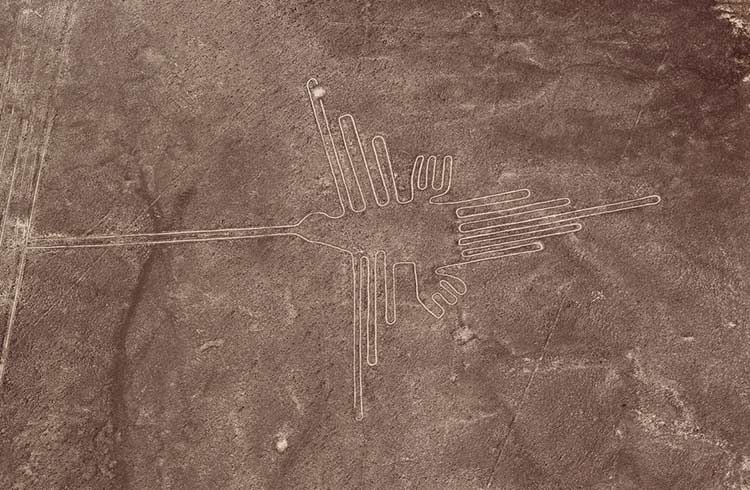
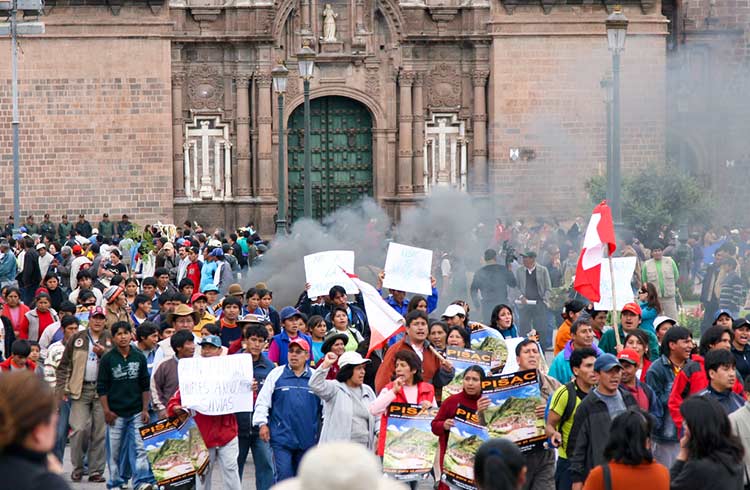
2 Comments
Nice article I would like to say something It is advisable to always carry sweets, chocolates, and some snack since in the Sanctuary of Machu Picchu no kiosk so you can buy something.All trash stored in a plastic bag, then vote in the containers.
I love your blog and the way you write it, I also did the Inca Trail, it's very tiring but the whole experience is unique and highly recommended, it's hard and everything is worth it.
And a lot depends on which agency you go with. I went with TreXperience Peru.
greetings luck